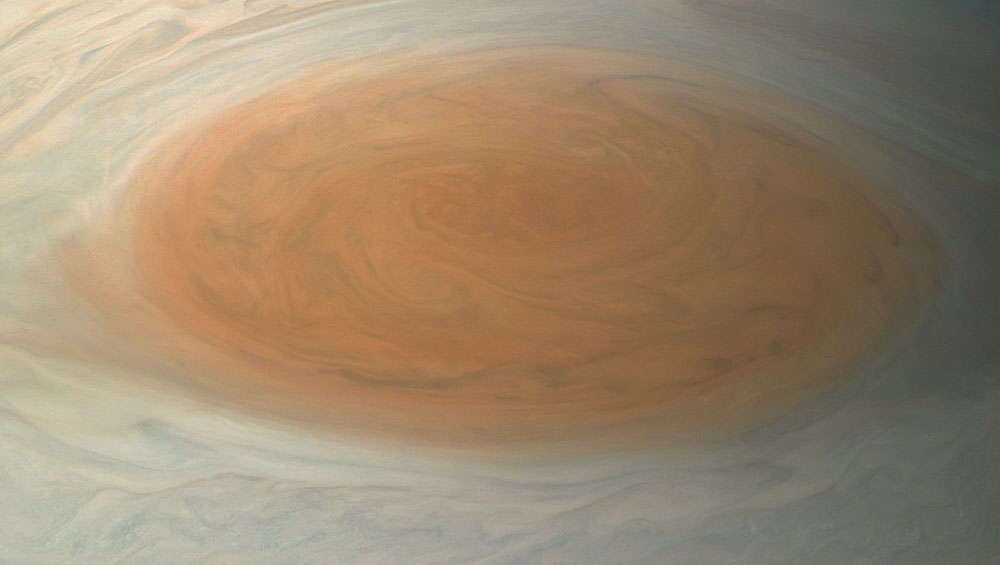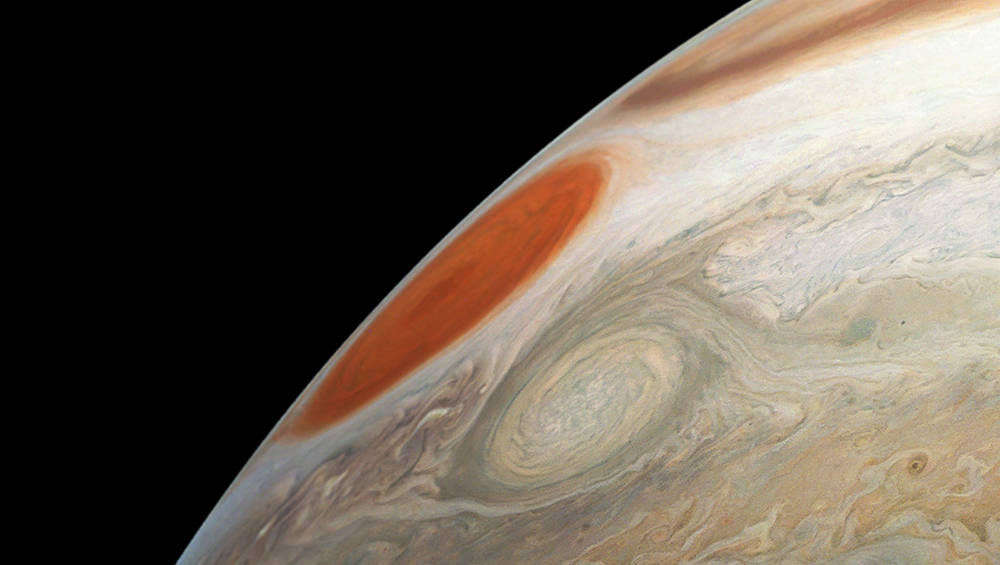Create a free profile to get unlimited access to exclusive videos, sweepstakes, and more!
Because Jupiter’s Great Red Spot isn’t monstrous enough, it devours entire storms

Nobody knows why Jupiter’s Great Red Spot began to shrink (never mind how it formed), but the ultimate space storm has been keeping itself alive through cannibalism.
The Great Red Spot was thought to be facing its own imminent doom when anticyclones swirling over Jupiter collided with it in the past few years. It seemed that they were taking pieces of its red clouds with them and getting away with it. That shouldn’t be an issue for a behemoth with 355-mile-per-hour winds. Now, new research has found that the spot may have shrunk but continues to hold on to its monstrous power because it has been fueling up by eating the same anticyclones that were thought to be taking bites out of it.
“As a result [of the storm interactions] the Great Red Spot increased its internal rotation velocity, maintaining its vorticity but decreasing its visible surface area,” said physicist Agustín Sánchez-Lavega, who red a study recently published in Journal of Geophysical Research Planets.
Jupiter’s iconic maelstrom is an anticyclone itself. In anticyclones, wind swirls around an area of intense pressure in which air is sinking. It has apparently been surviving by devouring smaller storms—if you could call something half the size of Earth small—that run into it and using their rotation energy to boost its own. Whatever damage these storms do to it is superficial. Even though it visibly appeared to shrink even more when several of them had an encounter with it, absorbing their energy brought it back to the size it had been pre-collision.
Turned out the visible shrinking was deceptive. Beneath the clouds that the human eye could see was a powerful vortex whose winds continued whirling and swirling deep inside despite interactions with smaller vortices in its shallows. These phenomena came to be called “flakes” because the intruding anticyclones appeared to flake off parts of the Great Red Spot’s clouds.
While the cloud that makes Jupiter look like Jupiter looked like it was shrinking, that didn’t mean that the vortex powering it from the depths of the gas giant was.
When two anticyclones run into each other, the larger one is always going to swallow the smaller one, even if it doesn't happen right away. What happens in the middle is kind of like a python swallowing large prey that creates a huge bulge in the snake until it is fully digested. The outer clouds of the larger storm will bulge until it completely absorbs the smaller one. Until the storms fully merge, they engage in a dance of death in which the smaller one orbits the larger one until it finally accepts its fate.
Not only did the Great Red Spot face anticyclones, but in one instance, a Jovian cyclone tried to get in on the action while it was already merging with an anticyclone. The monster still had to digest the anticyclone when faced with the other storm. Because the fringes of both the Great Red Spot and the cyclone’s vortices were interacting while the red beast was trying to absorb another storm, it created what is known as a stagnation point, which ended up in the anticyclone being vomited out and causing the flakes that made some astronomers think that the Great Red Spot was going down for real.
Disturbances to such a huge and enduring storm turned out to not be so deep. The real hardcore part of the vortex was found to have nothing to do with those interactions. Instead, when the other storms merged with the mass of reddish clouds above, they were actually fueling the monster within by feeding it rotation energy that kept it going. The panic that hit the astronomical community when the flakes were reported probably came from mistakenly connecting the vortex with the collisions when they really only affected the surface.
“The interactions are not necessarily destructive but can transfer energy to the [Great Red Spot], maintaining its steady state and guaranteeing its long lifetime,” Sánchez-Lavega said.
So long as it keeps eating storms, the Great Red Spot will keep getting rotation energy to maintain its monstrous vortex, and Jupiter isn’t about to stop spawning storms anytime soon.















